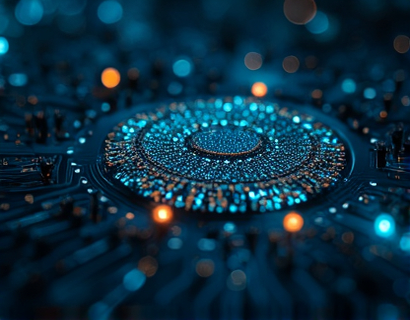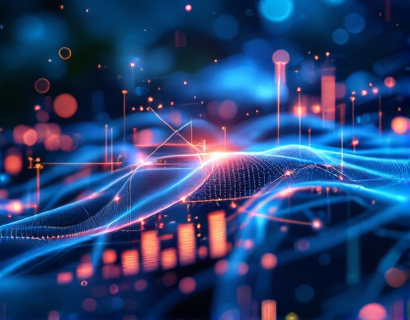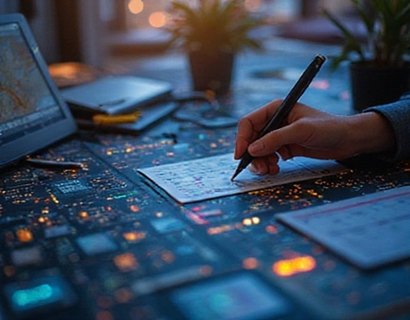Unlocking Next-Gen Productivity: The Synergy of Crypto and AI
The intersection of cryptocurrency and artificial intelligence (AI) is giving rise to a new era of digital transformation, one that promises to revolutionize the way tech-savvy innovators and early adopters approach productivity and task management. This article delves into the emerging marketplace where these two cutting-edge technologies converge, offering advanced applications and services that simplify daily tasks and enhance overall efficiency. By exploring the synergy between crypto and AI, we aim to provide a comprehensive understanding of how this fusion is unlocking unprecedented potential for tech enthusiasts and pioneers in the digital space.
Understanding the Basics: Cryptocurrency and AI
To fully appreciate the impact of merging cryptocurrency with AI, it's essential to first understand the fundamentals of both technologies. Cryptocurrency, often referred to as digital or virtual currency, operates on a decentralized network known as a blockchain. This technology ensures secure, transparent, and tamper-proof transactions without the need for intermediaries like banks. Bitcoin, launched in 2009, was the first and most well-known cryptocurrency, but thousands of others have since emerged, each with unique features and use cases.
Artificial intelligence, on the other hand, encompasses a broad range of technologies designed to simulate human intelligence in machines. These include machine learning, natural language processing, computer vision, and more. AI systems can learn from data, recognize patterns, make decisions, and perform tasks that traditionally required human intervention. The integration of AI into various sectors has already led to significant advancements, from autonomous vehicles to personalized healthcare solutions.
The Convergence: Crypto and AI
The convergence of cryptocurrency and AI is creating a powerful synergy that is redefining productivity tools and services. By leveraging the security and transparency of blockchain technology, AI applications can operate with enhanced trust and efficiency. This combination allows for the development of decentralized AI models, where data and computations are distributed across a network, reducing the risk of data breaches and increasing computational power.
One of the key benefits of this convergence is the creation of decentralized applications (dApps) that utilize AI to provide innovative solutions. These dApps can operate on blockchain networks, ensuring that user data is secure and that transactions are transparent. For tech-savvy innovators, this means access to a new generation of tools that not only enhance productivity but also prioritize data privacy and security.
Enhanced Productivity through AI-Powered Tools
The integration of AI into productivity tools is transforming the way users manage their tasks and streamline workflows. AI-driven applications can automate repetitive tasks, provide intelligent recommendations, and offer real-time insights, all of which contribute to a more efficient and effective work environment. Here are some specific ways AI is enhancing productivity:
- Task Automation: AI can automate routine tasks such as data entry, scheduling, and email management. By offloading these tasks to AI, users can focus on higher-value activities that require human creativity and critical thinking.
- Intelligent Assistants: AI-powered virtual assistants can help users manage their calendars, set reminders, and provide context-aware suggestions. These assistants can learn from user behavior to become more personalized and effective over time.
- Predictive Analytics: AI algorithms can analyze large datasets to identify trends and patterns, enabling users to make informed decisions. For example, in project management, AI can predict project timelines and resource requirements based on historical data.
- Natural Language Processing (NLP): NLP enables AI to understand and generate human-like text, making it possible to create chatbots and virtual assistants that can handle complex queries and conversations. This technology is particularly useful in customer support and content creation.
These AI-powered tools are not only available as standalone applications but are also integrated into blockchain-based platforms, ensuring that data is secure and transactions are transparent. This integration is particularly beneficial for businesses and individuals who handle sensitive information and require a high level of security.
Decentralized Marketplaces: A New Paradigm
Decentralized marketplaces are another area where the combination of cryptocurrency and AI is making a significant impact. These platforms leverage blockchain technology to create peer-to-peer marketplaces where users can buy, sell, and exchange goods and services without intermediaries. AI plays a crucial role in these marketplaces by providing advanced matching algorithms, fraud detection, and personalized recommendations.
For instance, a decentralized marketplace for freelance services can use AI to match clients with the most suitable freelancers based on skill sets, availability, and past performance. The use of smart contracts ensures that transactions are secure and automated, reducing the need for trust between parties. This not only speeds up the hiring process but also minimizes the risk of fraud and disputes.
Moreover, these marketplaces can offer unique tokens or cryptocurrencies that serve as the native currency for transactions within the platform. These tokens can be earned through contributions, such as providing high-quality services or participating in community governance. This token-based economy incentivizes users to engage actively and contribute value to the ecosystem.
Simplifying Daily Tasks with AI and Crypto
The combination of AI and cryptocurrency is also simplifying daily tasks for tech enthusiasts and early adopters. Here are some practical examples of how this synergy is making a difference:
- Smart Home Automation: AI-driven smart home devices can be controlled and managed using blockchain-based platforms. These platforms ensure that user data is secure and that devices operate efficiently. For example, AI can optimize energy usage based on user habits and external factors like weather conditions, while blockchain ensures that all data and commands are securely transmitted.
- Decentralized Finance (DeFi): AI can enhance DeFi platforms by providing predictive insights into market trends, optimizing portfolio management, and automating trading strategies. The use of blockchain ensures that all financial transactions are transparent and secure, reducing the risk of fraud and increasing trust in the system.
- Content Creation and Monetization: AI can assist content creators by generating ideas, editing videos, and even creating original content. When combined with blockchain, creators can tokenize their content and monetize it directly from their audience, without relying on traditional intermediaries like streaming platforms or ad networks.
- Supply Chain Management: AI can optimize supply chain operations by predicting demand, managing inventory, and ensuring efficient logistics. Blockchain provides a transparent and immutable record of all transactions, making it easier to track products from origin to destination and ensure authenticity.
These applications demonstrate how the integration of AI and cryptocurrency is not just a technological novelty but a practical solution to real-world problems. By leveraging the strengths of both technologies, users can achieve greater efficiency, security, and innovation in their daily lives.
Challenges and Considerations
While the potential of combining cryptocurrency and AI is immense, there are several challenges and considerations that must be addressed. One of the primary concerns is the regulatory landscape. As both technologies are still evolving, regulatory frameworks are often unclear or inconsistent across different jurisdictions. This can create uncertainty for developers and users, potentially hindering adoption.
Another challenge is the technical complexity involved in integrating AI with blockchain. Developing robust and scalable solutions requires expertise in both domains, which can be a barrier for smaller players. However, as the ecosystem matures, more tools and frameworks will become available, making it easier for developers to build innovative applications.
Privacy is also a critical consideration. While blockchain offers transparency, it can also expose sensitive information if not properly managed. AI systems, especially those that handle personal data, must adhere to strict privacy standards to protect user information. Implementing advanced encryption and anonymization techniques is essential to address these concerns.
The Future of Crypto and AI
Looking ahead, the future of cryptocurrency and AI is bright, with numerous opportunities for growth and innovation. As more organizations recognize the benefits of this synergy, we can expect to see a surge in the development of new applications and services. Here are some trends and predictions for the future:
- Increased Adoption: As the technology matures and regulatory clarity improves, more businesses and individuals will adopt AI and blockchain solutions. This will lead to a broader ecosystem of decentralized applications and services.
- Interoperability: Efforts to create standards and protocols for interoperability between different blockchain networks and AI systems will become more prevalent. This will enable seamless integration and collaboration across various platforms.
- Enhanced User Experiences: AI will continue to play a crucial role in enhancing user experiences by providing more intuitive and personalized interactions. From smart home devices to financial management tools, AI will make technology more accessible and user-friendly.
- Sustainable Solutions: The combination of AI and cryptocurrency can also contribute to sustainable development goals. For example, AI can optimize resource usage and reduce waste, while blockchain can ensure transparent and fair trade practices.
In conclusion, the convergence of cryptocurrency and AI is unlocking new possibilities for tech-savvy innovators and early adopters. By leveraging the security and transparency of blockchain with the intelligence and efficiency of AI, we are witnessing the emergence of a new generation of productivity tools and services. These advancements not only simplify daily tasks but also pave the way for a more secure, efficient, and innovative digital landscape.










































